Four High-Profile Indie Watchmakers We’ve Seen During Geneva Watch Week
Some of the most stand-out watches from the Geneva Watch Week we’re by true artisanal watchmakers.
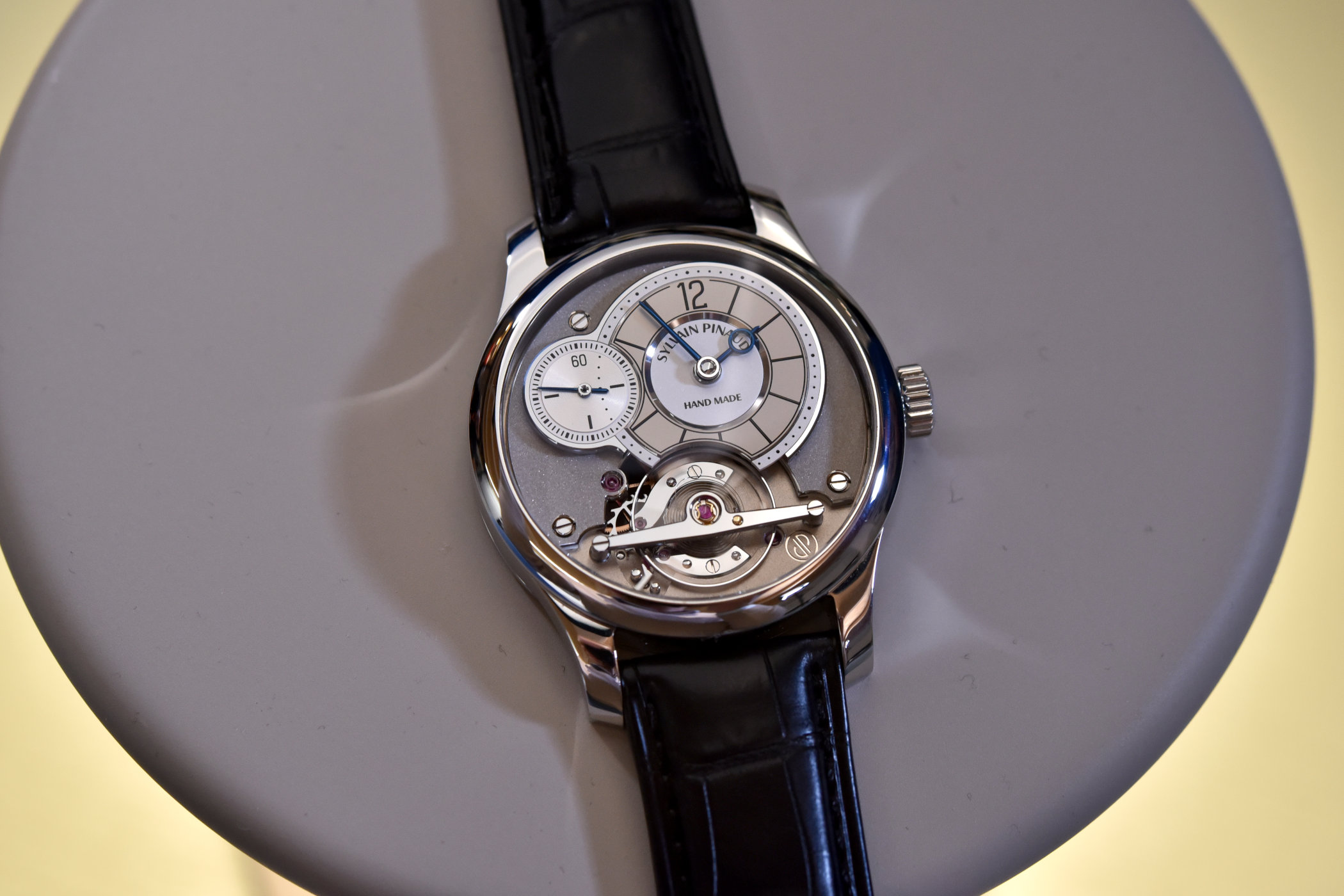
As advocates of the whole mechanical watchmaking industry, sharing the passion for watches on a daily basis, even we sometimes discover truly fascinating new people, brands and watches. We’ve always had a devotion to bringing you the best in the business, and this includes providing a podium to the smallest of the small. We’re madly enthusiastic about people dedicating their entire life to painstakingly creating what they believe is the best possible watch. And in true artisanal watchmaking, that means by hand, all alone or with a very small team, and with tremendous amounts of patience. During the recent Geneva Watch Week, we got up close with four such watches by small independent makers, often working solo. Some familiar faces, and some entirely new, but all of them equally fascinating and astounding to behold.
Earlier this year published three Sunday stories (Part 1, Part 2, Part 3) where we listed some of the best independent watchmakers outside of Switzerland. In a sense, today’s list is somewhat of an encore to those three articles. True, three of the four are based in Switzerland, which remains the heart of the industry after all, but that doesn’t necessarily mean the maker is native Swiss.
We start our journey in Switzerland, with one native-born Swiss watchmaker and one with Japanese roots. We quickly jump the border into Germany for a familiar face before rounding off the quartet with a French watchmaker residing in Switzerland. We won’t go into too many details as of now as we’ll very likely cover each one in a stand-alone article soon because we definitely feel they deserve our unbridled attention. With that in mind, let’s get into things, shall we?
Note from the editor: Do take into account that some of these watches were prototypes, or completed just moments before the start of the fair week. So in some you might find small imperfections upon closer inspection.
Philippe Narbel and his Narbel & Co Roots watch
We start things off with a newcomer to the independent watchmaking scene, but one to surely keep on your radar. Philippe Narbel is an extremely humble man who started out as a jewellery maker before switching to watchmaking. Following the career change, he honed his skill working for Audemars Piguet. Next to his newly founded Narbel & Co watchmaking atelier, he also owns and runs Manufactor SA, a company that specializes in finishing techniques.
The Roots watch is the first creation under his own name, Narbel & Co and is a stunner in the metal. The TV-screen shaped case immediately grabs your attention but it’s all the minute little details upon closer inspection that really make this a stand-out piece. The German Silver dial is finished with a grey-black PVD coating. The sterling silver square in the centre has a pattern which is the result of a mistake Philippe Narbel made in his jewellery-making days. It’s unique and unusual, yet blends in perfectly with the rest of the watch. Or the sculpted indices that arch down from the sloping edge of the dial.
And turning the watch over reveals yet more of this dedication to detail. Here is also where you will find the only identification of its maker, engraved into the bridge of the movement. What you see here is a heavily reworked and upgraded Peseux 7001 manual wound calibre. The movement is almost unrecognizable and is converted into a case-matching TV-screen shape. Again, the details are simply breathtaking, with frosted finishes, engravings and hand-applied anglage. The entire movement is framed by a sloping flange replicating the sloping outer perimeter of the dial.
If we are talking about revelations in watchmaking, to me, this might be one of the best ones I will get to witness this year. The Narbel & Co Roots watch is an often much-needed horological breath of fresh air coming from one of the nicest guys you will ever meet. Philippe Narbel is not in it for the name and fame, but rather for the deeply-rooted passion he feels and the creation of friendships and communities. He is surely one to watch.
For more information, please visit Narbel&Co.com (under construction at the time of writing) or his Instagram account.
Quick Facts – 40mm x 40mm x 10mm height – stainless steel or rose gold case – TV-screen shape – sapphire crystal front and back – grey-black PVD coated German Silver dial with sculpted indices and decorative sterling silver centre panel – skeletonized hour and minute hands – Peseux 7001 movement, reconstructed and finished in-house – manual winding – hand-applied frosting, anglage, perlage, engravings – 21,600vph – 42h power reserve – bespoke strap made per client’s specifications – CHF 44,000 (in steel) or CHF 57,000 (in gold)
Yosuke Sekiguchi and the Primevère watch
The story of Japanese-born Yosuke Sekiguchi is remarkable, to say the least. Born in Isesaki, Japan, Yosuke Sekiguchi had a childhood dream of being a professional watchmaker, which brought him to France and ultimately Switzerland. Following his studies in watchmaking, he worked for movement specialists La Joux-Perret and at high-end independent Christophe Claret. During his years in the industry, he also restored a historical Jules Jürgensen pocket watch movement from 1871 (a LeCoultre ébauche) and converted it to a wristwatch. To this day, that very watch can be found gracing Yosuke’s wrist.
This vintage ébauche would serve as the inspiration needed for him to break out on his own in January of 2020. Not the best timing I’d say, but that hasn’t deterred Yosuke Sekiguchi one bit. He painstakingly recreated the vintage movement by hand in his personal workshop and created an extremely refined and simply gorgeous watch, the Primevère.
Admittedly, when thinking of a historical pocket watch movement this old, the vast majority was built to run and lacked any ornate decoration or finishing. But from whichever angle you look at it, the Primevère is pretty much flawlessly finished to Haute Horlogerie standards. Almost the entire movement is constructed by Yosuke Sekiguchi himself. Constructed of German Silver, the bridges are cut and finished entirely by hand, with bevelled edges and circular brushing. Also, note the two gold caps for the balance wheel and pallet lever, stylistically carried over from the original inspiration.
While there’s far more to discover around the back, the front is almost as equally as impressive and continues in a style fit for the original Jules Jürgensen pocket watch. A white or black two-piece Grand Feu enamel dial is finished with refined spade-and-whip hands combined with printed numerals and markings depending on the selected case material. The Yosuke Sekiguchi Primevère comes in a steel or rose gold case with a 39.5mm diameter. The height is a little surprising, at 12mm but a direct result of the historical construction of the movement. On the wrist, you don’t notice the thickness of the watch at all and it will surely be appreciated by whoever is lucky enough to add it to his/her collection. We surely would be!
Yosuke Sekiguchi does not have a personal website or social media channels but for more information, please contact Koyanagi-Tokei.com (representatives of Yosuke Sekiguchi’s work).
Quick Facts – 39.5mm x 12mm – stainless steel or rose gold case – sapphire crystal front and back – 30m water-resistant – two-piece Grand Feu enamel dial in white or black – printed blue or black numerals and markings – spade-and-whip hour and minute hands – Calibre YS-Y01 – manual winding – 18,000vph – 40h power reserve – made to order – CHF 51,000 in steel or CHF 56,000 in rose gold (both excl. taxes)
Marco Lang and the Zweigesicht-1 watch
Marco Lang is a name that surely rings many bells with collectors and enthusiasts. Through his work of Lang & Heyne, Marco Lang has been active in the watchmaking industry for many years now. Prior to that, he restored clocks and scientific instruments. After leaving Lang & Heyne he started working on his new solo project under his own name. Presented in 2020, the Zweigesicht-1 was Marco Lang’s first model under his eponymous atelier. And boy what a watch this is!
It took us a while to get our hands on it to photograph and experience it in real life but is every bit as impressive as the images made us believe it would be. The cool thing about the Zweigesicht-1, which means ‘two-faced’ in German, is the fact it comes with an interchangeability system that allows you to rotate the case and change from “business” to “party”. With the watch comes a special screwdriver that you can use to unscrew both lug-ends, flip over the watch, and reattach the lugs. And voilá, just like that you’ve gone from an exquisite yet traditional dial to the Zweigesicht-1’s extravagant side.
The watch is available in steel, rose gold or platinum and is produced in very limited quantities (18 pieces only). Almost every component in each watch is made by Marco Lang himself, using traditional tools and techniques. The ML-01 movement is quite special, as you can see from the secondary, fully openworked side. It incorporates a double-barrel system, a blued Breguet hairspring with a handmade four-legged balance wheel and a unique shock-indication system.
Everything is finished to Haute Horlogerie standards with polished and bevelled edges, flame-blued components, hand-applied engraving, etc. On the other side of the watch, you get a classical dial with slender Roman numerals and a quilloché motif on the centre section. A subtle yet refined touch is the fact the hour hand extends up to the ring that separates the two sections of the dial. It’s all done very nicely and offers a fascinating double-view of artisanal watchmaking. Traditional on one end, avant-garde on the other.
For more information, please visit MarcoLangWatches.com
Quick Facts – 40mm x 12.5mm – stainless steel, rose gold or platinum case – sapphire crystal on both sides – special case with removable lug module – traditional dial in silver with Roman indices, guilloché motif and pencil hands – openworked reverse dial with white-fired skeleton elements, translucent Grand Feu enamel and cathedral hands – Calibre ML-01, in-house – manually wound – lever escapement with free four-legged balance – blued Breguet hairspring – 70h power reserve – dual time indication, shock-indication system – alligator strap with an interchangeable system – limited to 18 pieces – priced from EUR 51,500 excl. VAT
Sylvain Pinaud and the Origine watch
Sylvain Pinaud is a relatively new and upcoming watchmaker who studied watchmaking at the Lucée Edgar Faure in Morteau, France. We’ve gotten to know him through his wildly creative and mechanically very impressive Chronograph Monopoussoir. This was a watch he designed and built from scratch by himself, to enter a competition devoted to craftsmanship in all sorts of industries (cheese-making included) spread across multiple categories. The main criteria for competing is that the product has to be made using traditional, artisanal techniques. Sylvain won the top prize in the Precision Techniques category, which we can fully understand.
It has been a bit quiet since we first met Sylvain, but that doesn’t mean he has been dormant all that time. Quite the contrary in fact, because earlier this year he presented his latest project, the Origine. And boy what a watch this is! It looks vastly different from his extravagant Chronograph Monopoussoir, with a much more traditional style and construction. Yet, the Origine is equally as incredible as his break-out watch, just with a completely different design.
The Origine features a 40mm wide and 11mm tall fully polished stainless steel case. While simple in shape and construction, it is the perfect canvas for the incredible off-centred dial and movement that reside between the two sapphire crystals front and back. The dial is elevated from the movement and comprises an hour and minutes display with a small seconds subdial. The bottom half of the watch’s face is dominated by the escapement mechanism with a free-sprung balance. It’s held in place with a straight bridge, which along with the hands can also be made in 18k pink gold.
The back of the movement reveals the winding mechanism and click-spring nestled in a three-quarter plate with finger bridges over some components of the running gear. Almost everything you see is made by hand, or with the help of specialist subcontractors. For the movement, only the jewels, mainspring and barrel spring are outsourced (which usually is the case). On the front of the watch, the dial is made by Comblemine, which is regarded as one of the best dial manufacturers in the business. There’s absolutely nothing to complain about in this, as the result is absolutely stunning. As far as artisanal watchmaking goes, this is about as good as it gets!
For more information, please visit Sylvain-Pinaud.com
Quick Facts – 40mm x 11mm – 316L stainless steel case, polished – sapphire crystal front and back – 30m water-resistant – handmade silver dial with off-centred hour and minutes and small-seconds display – Breguet-style hour hand – in-house made manual wound movement – 22 jewels – 21,600vph – 55h power reserve – free-sprung balance with Phillips spiral – bespoke options available upon request – EUR 65,000 to EUR 68,000 excl. VAT depending on execution





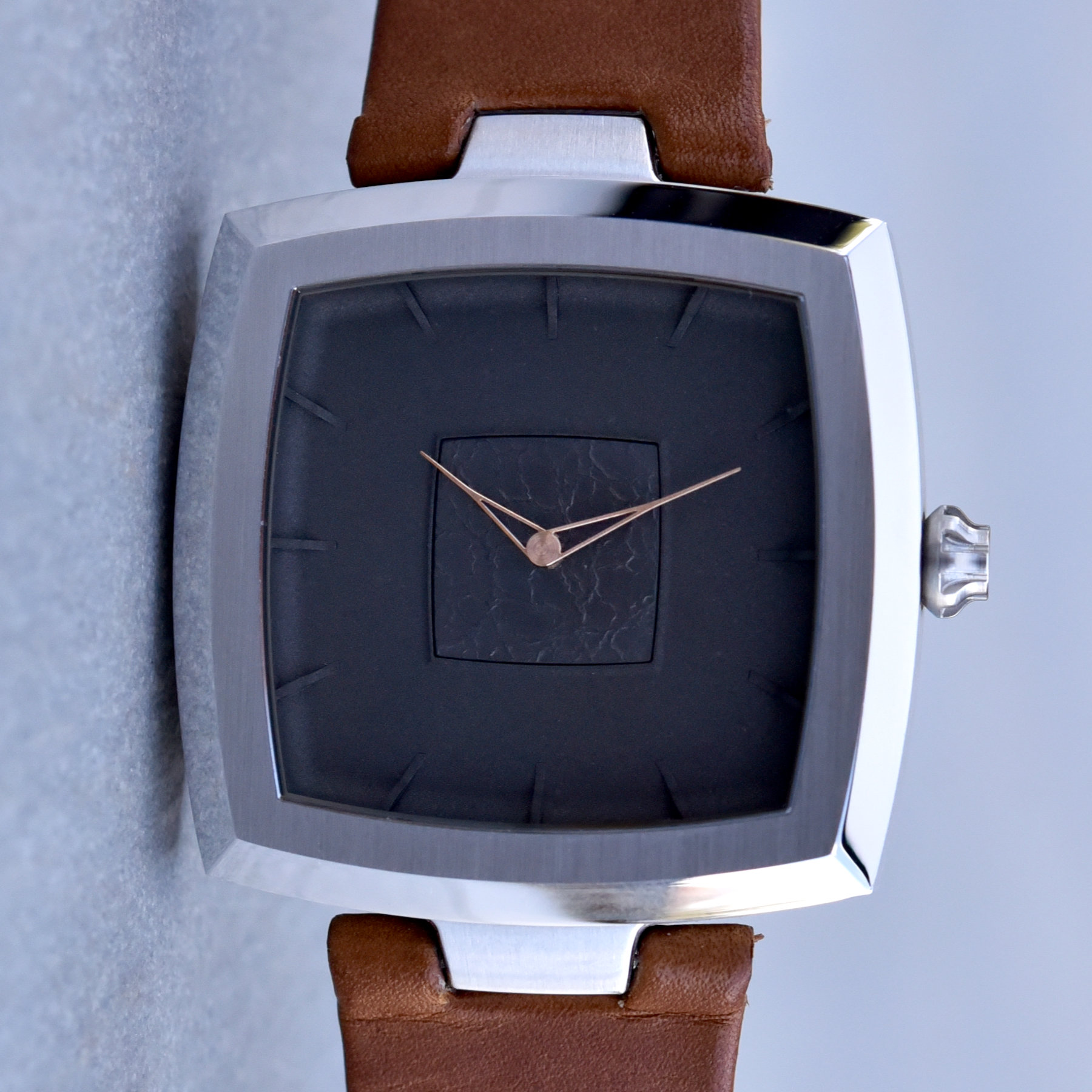
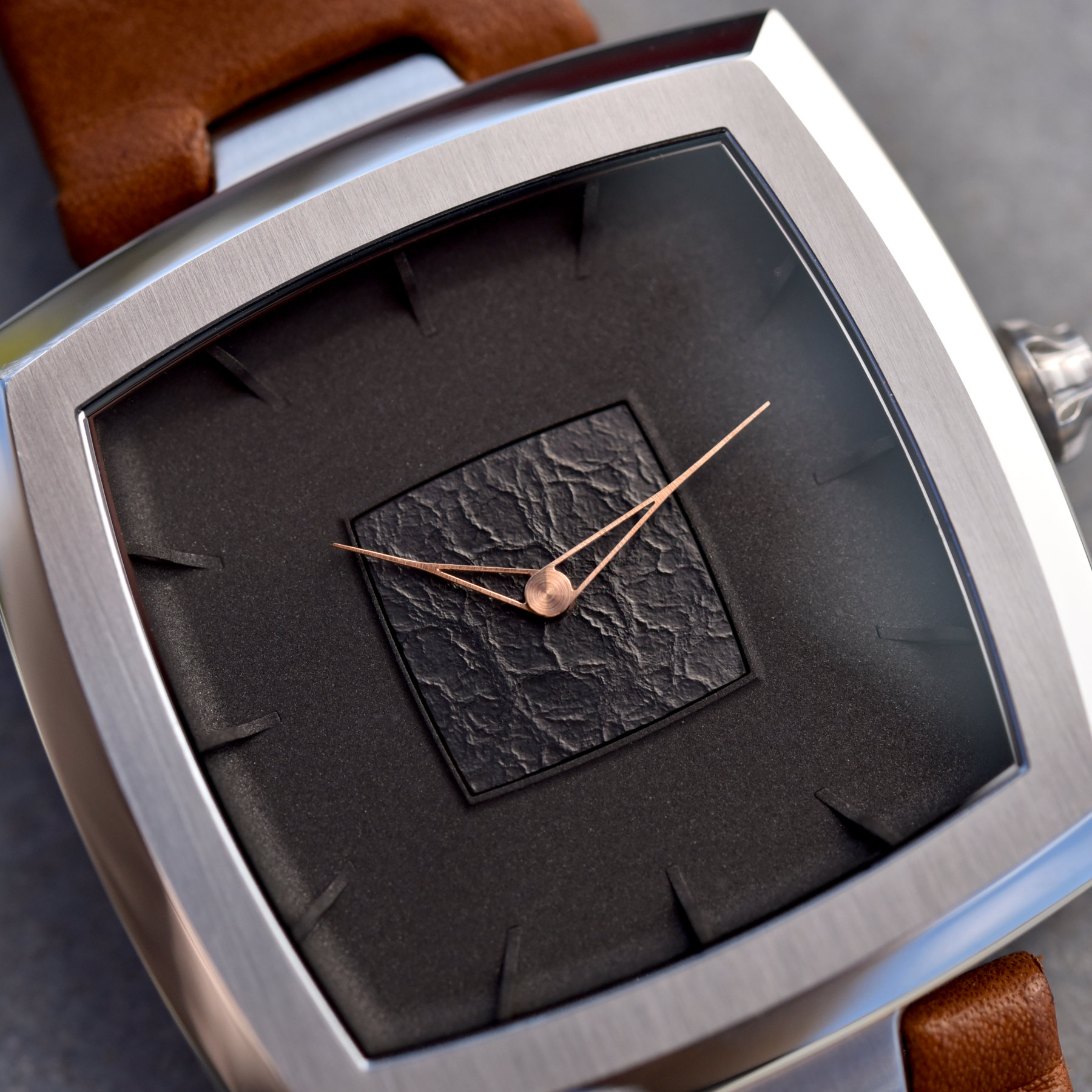
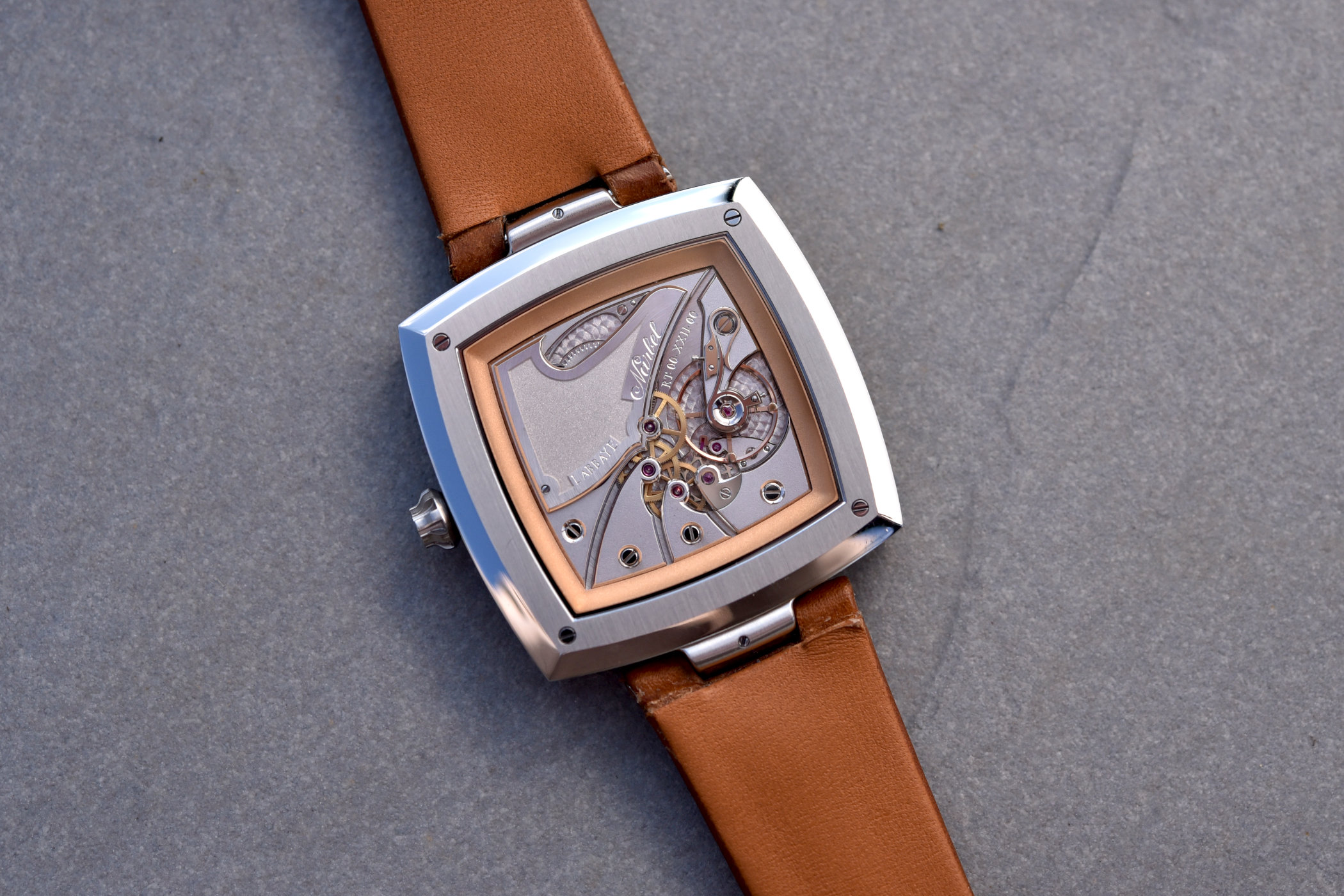

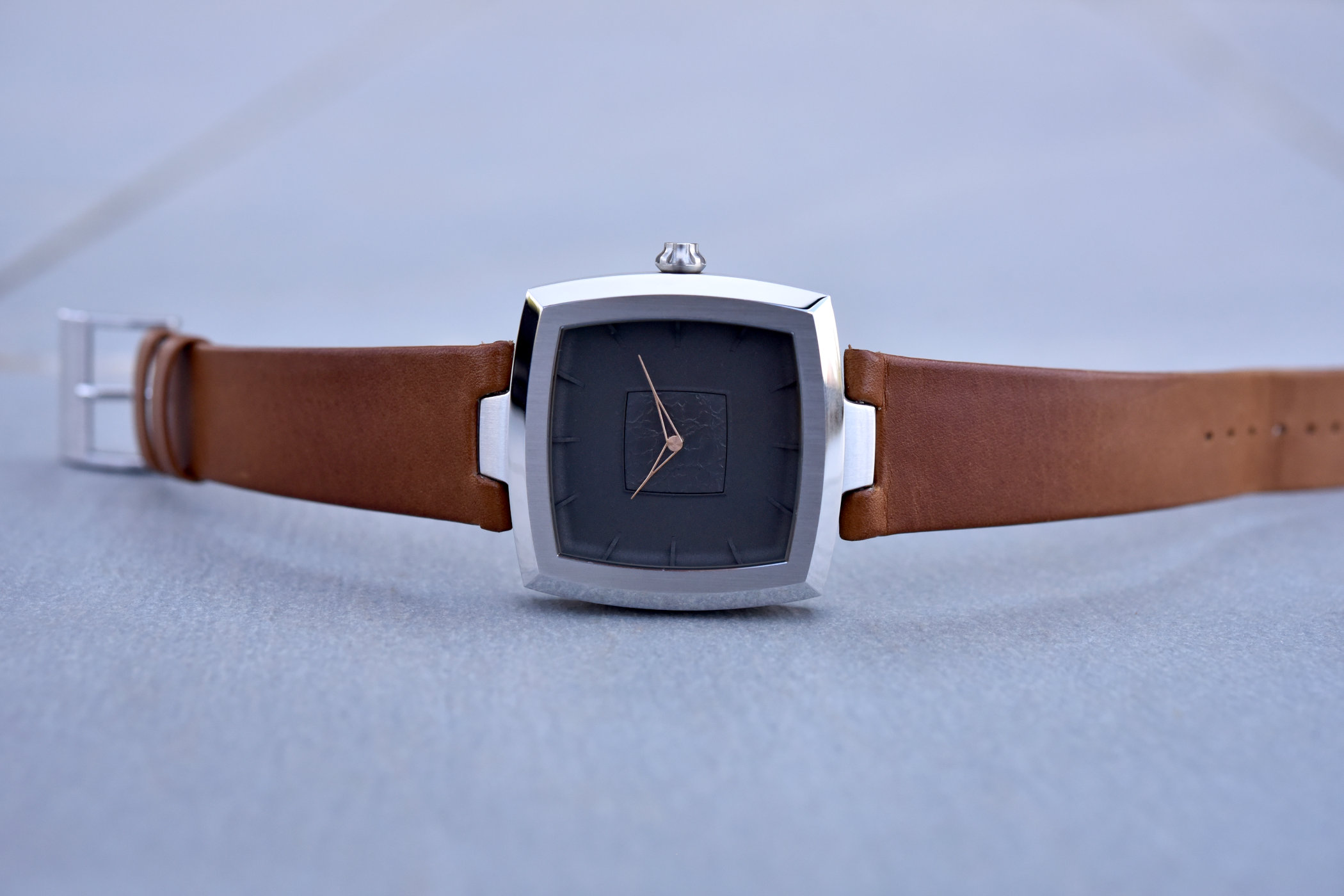
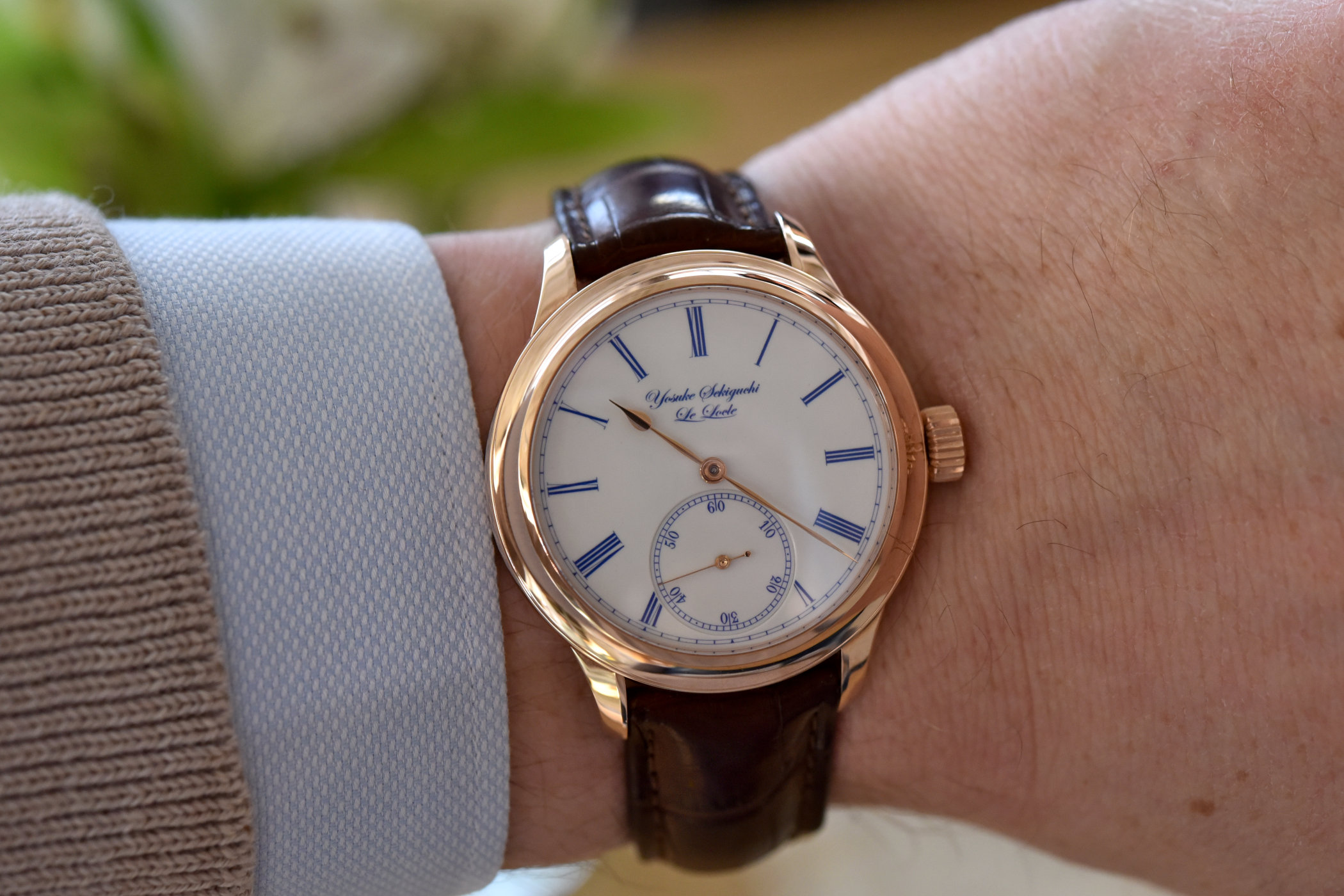
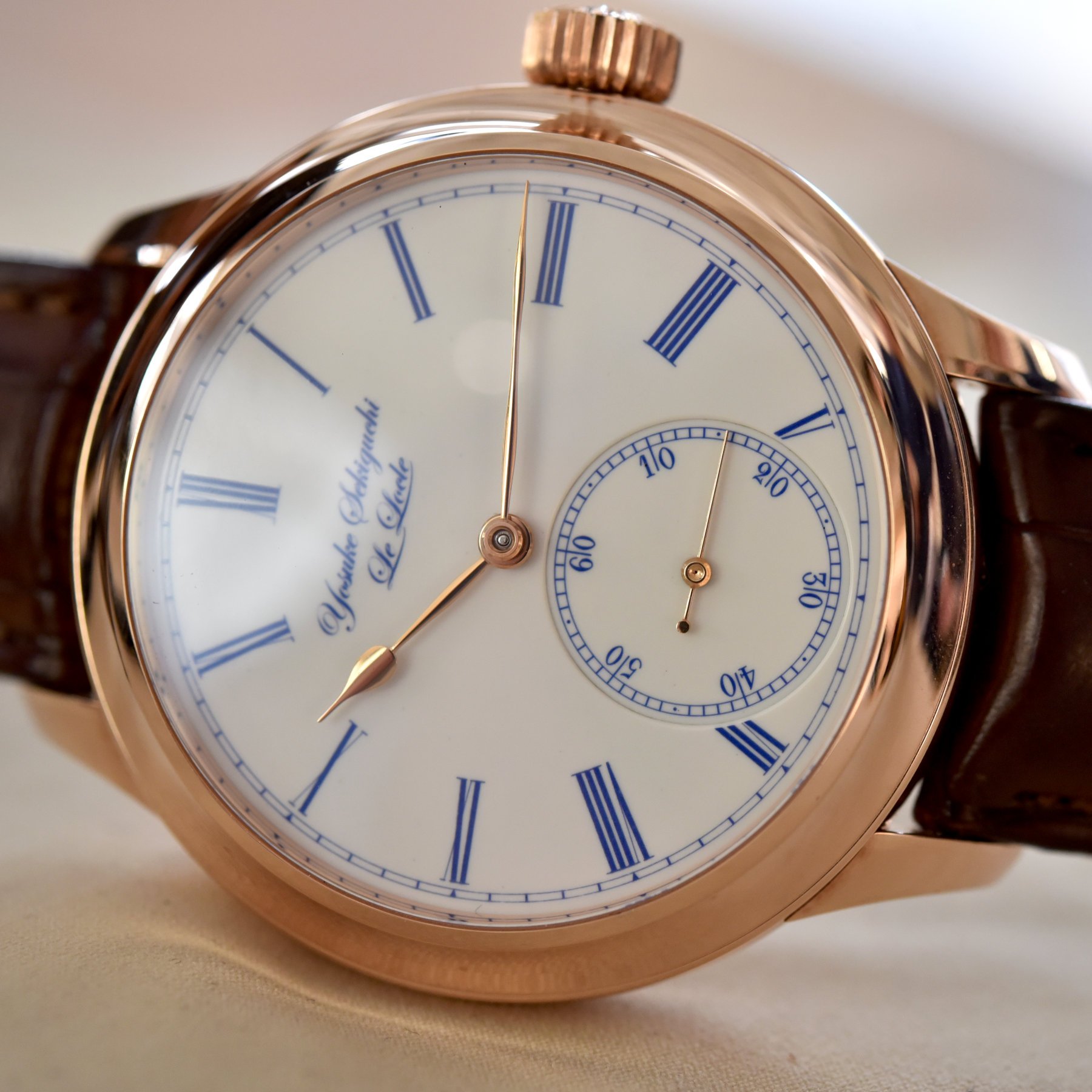
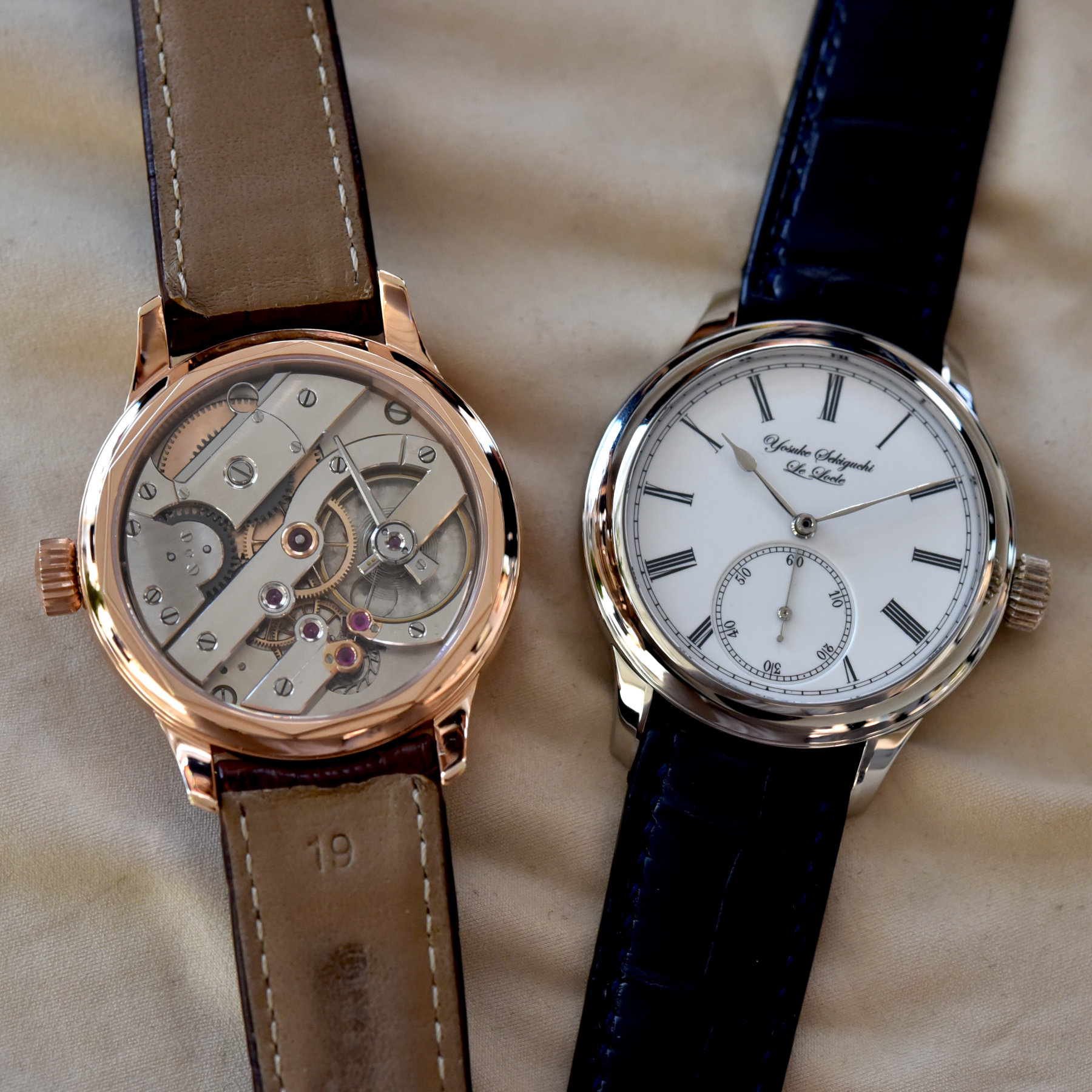
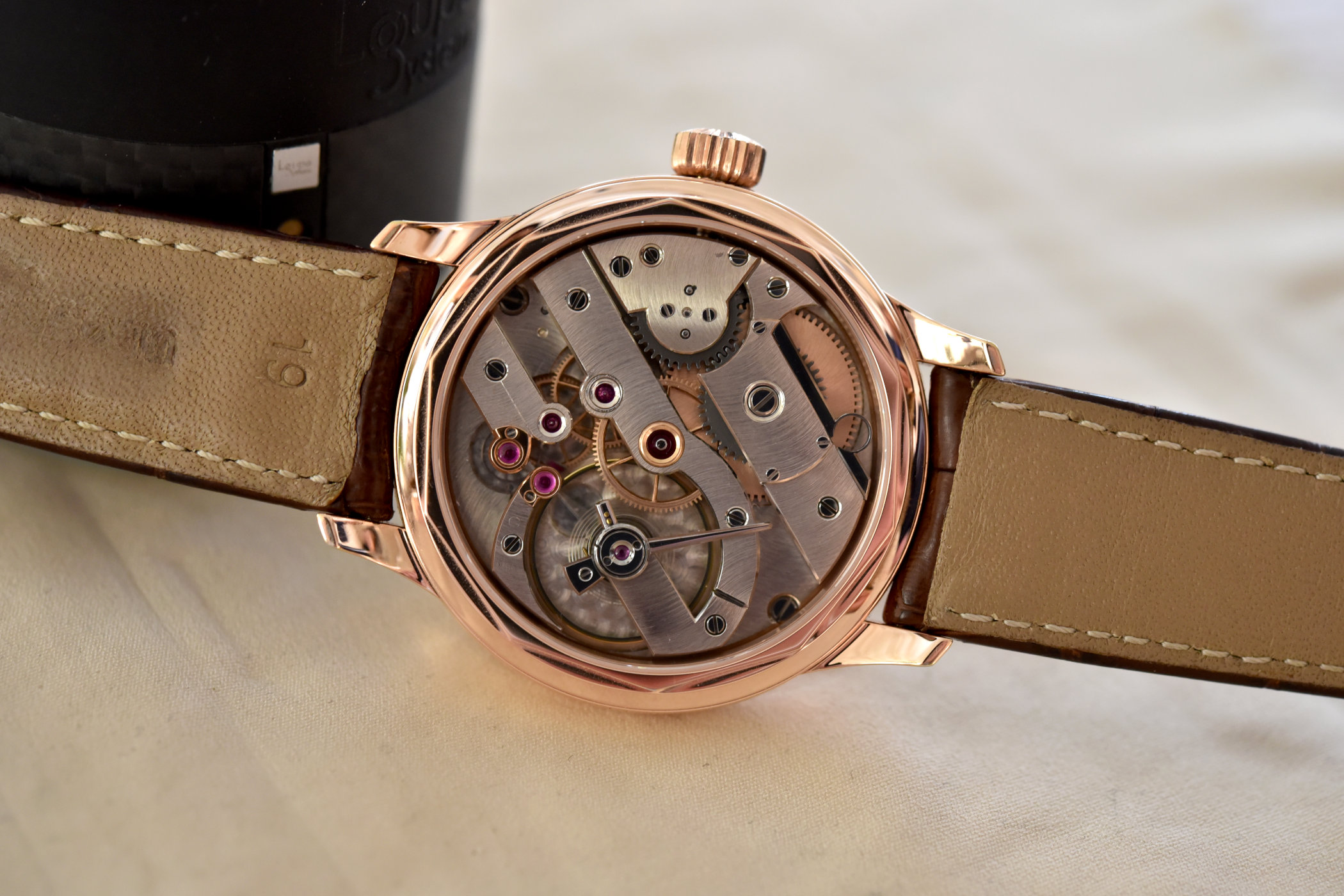
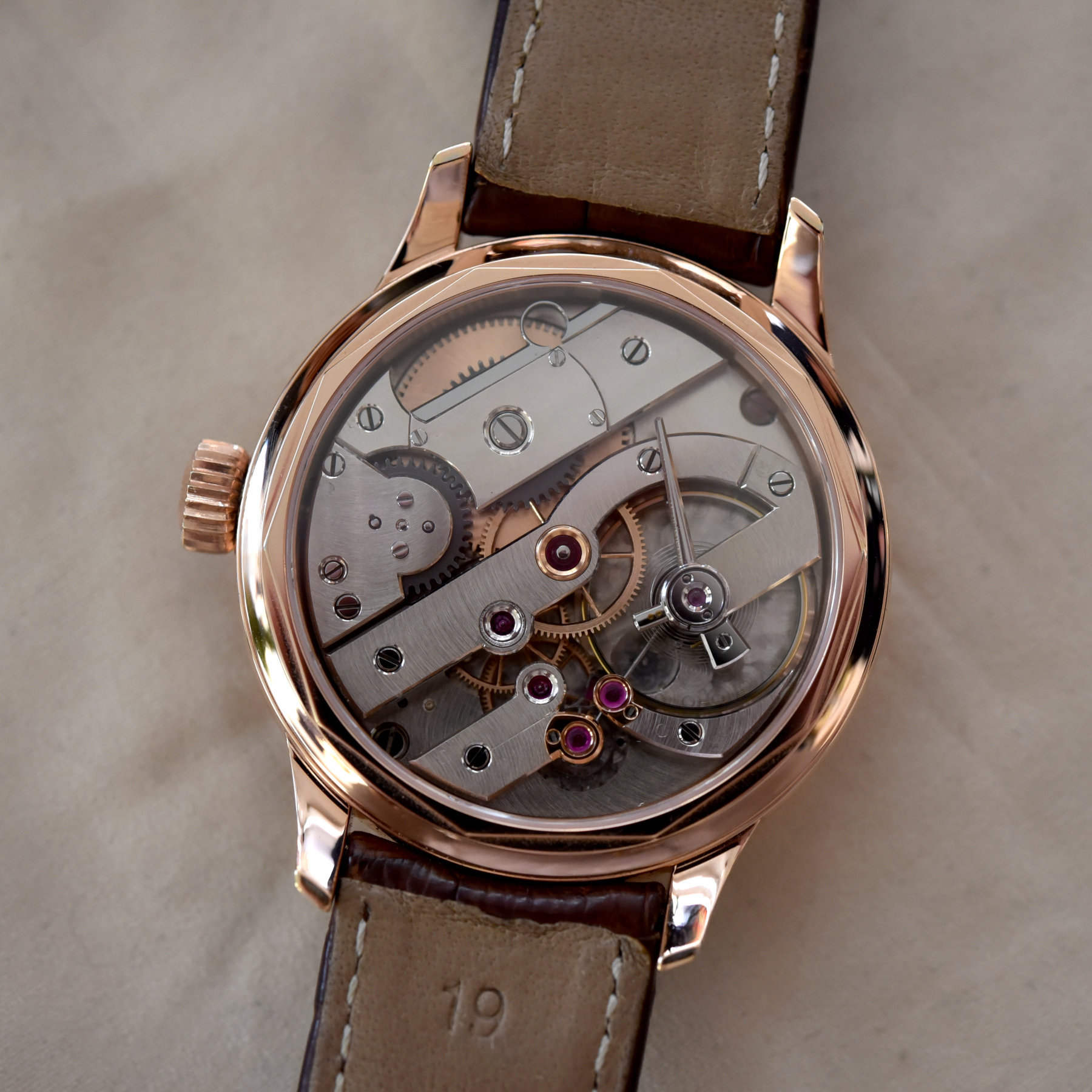
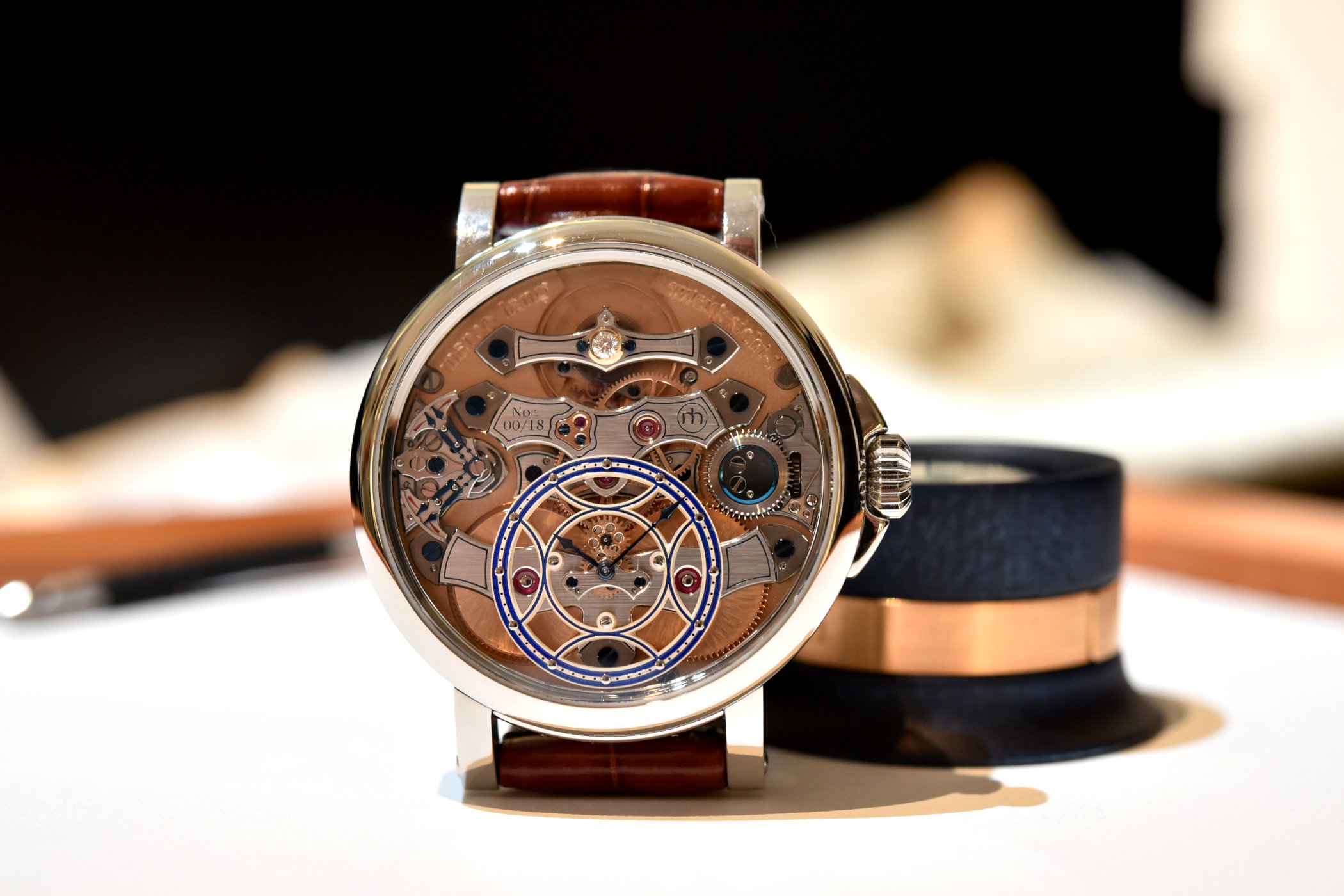
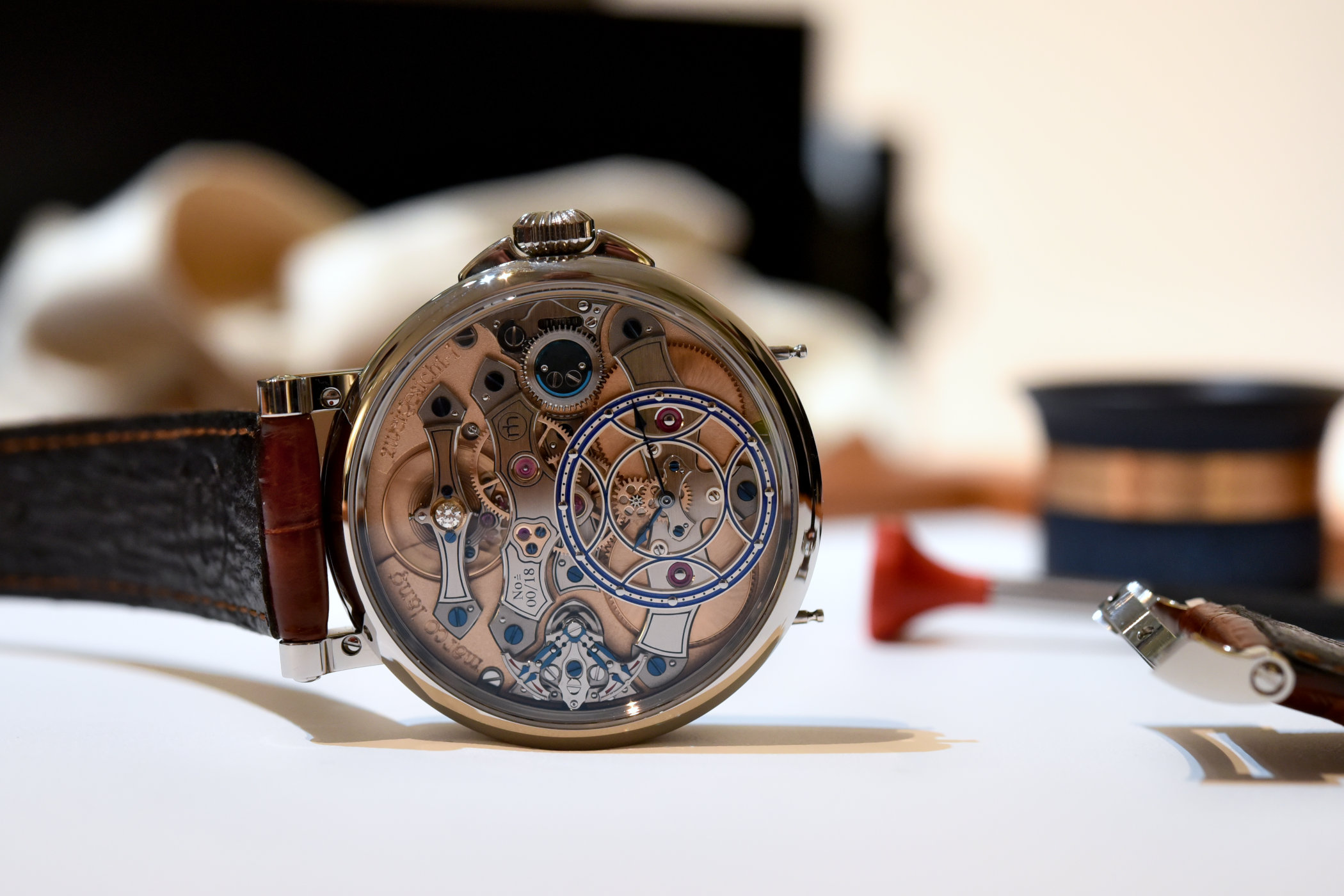

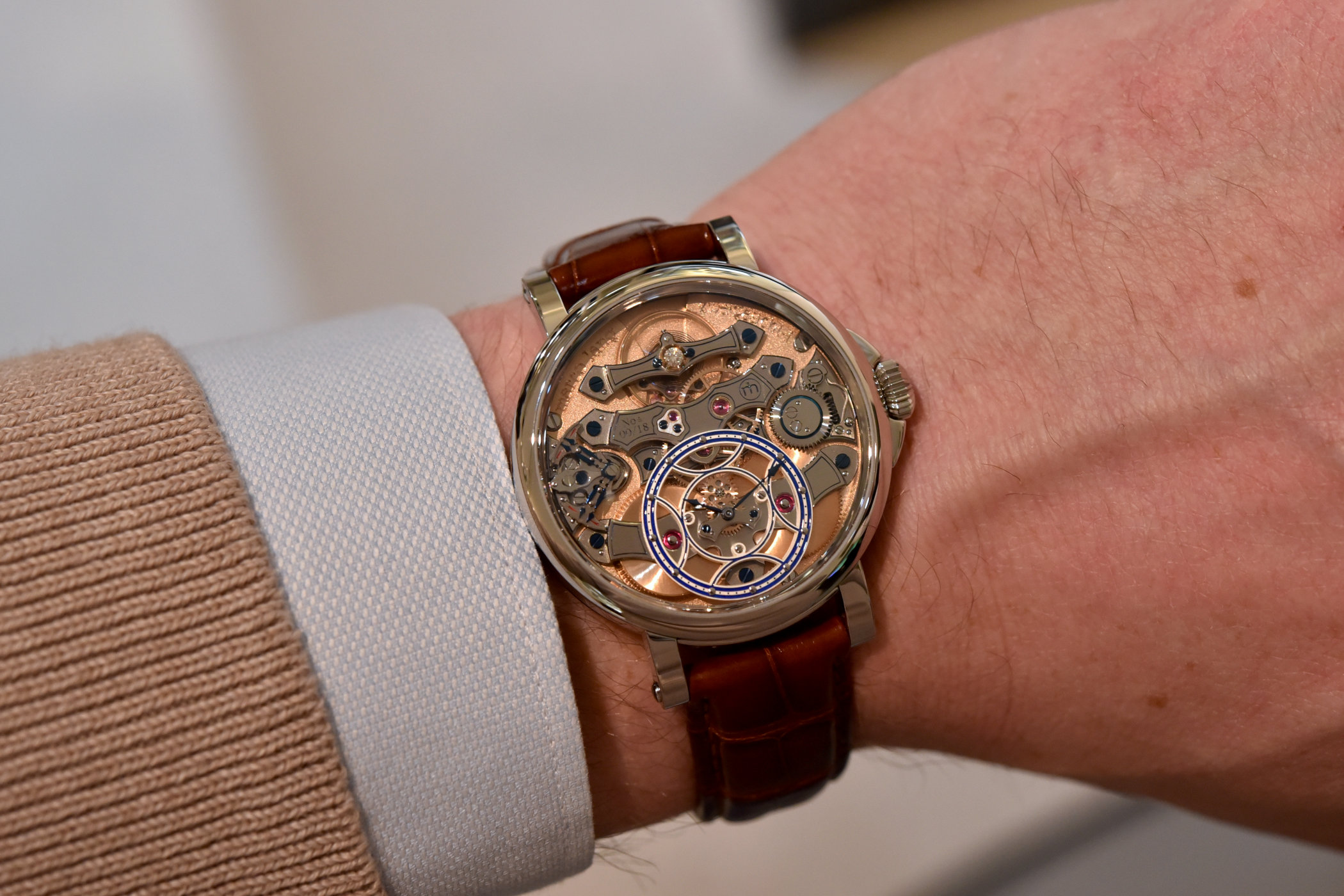


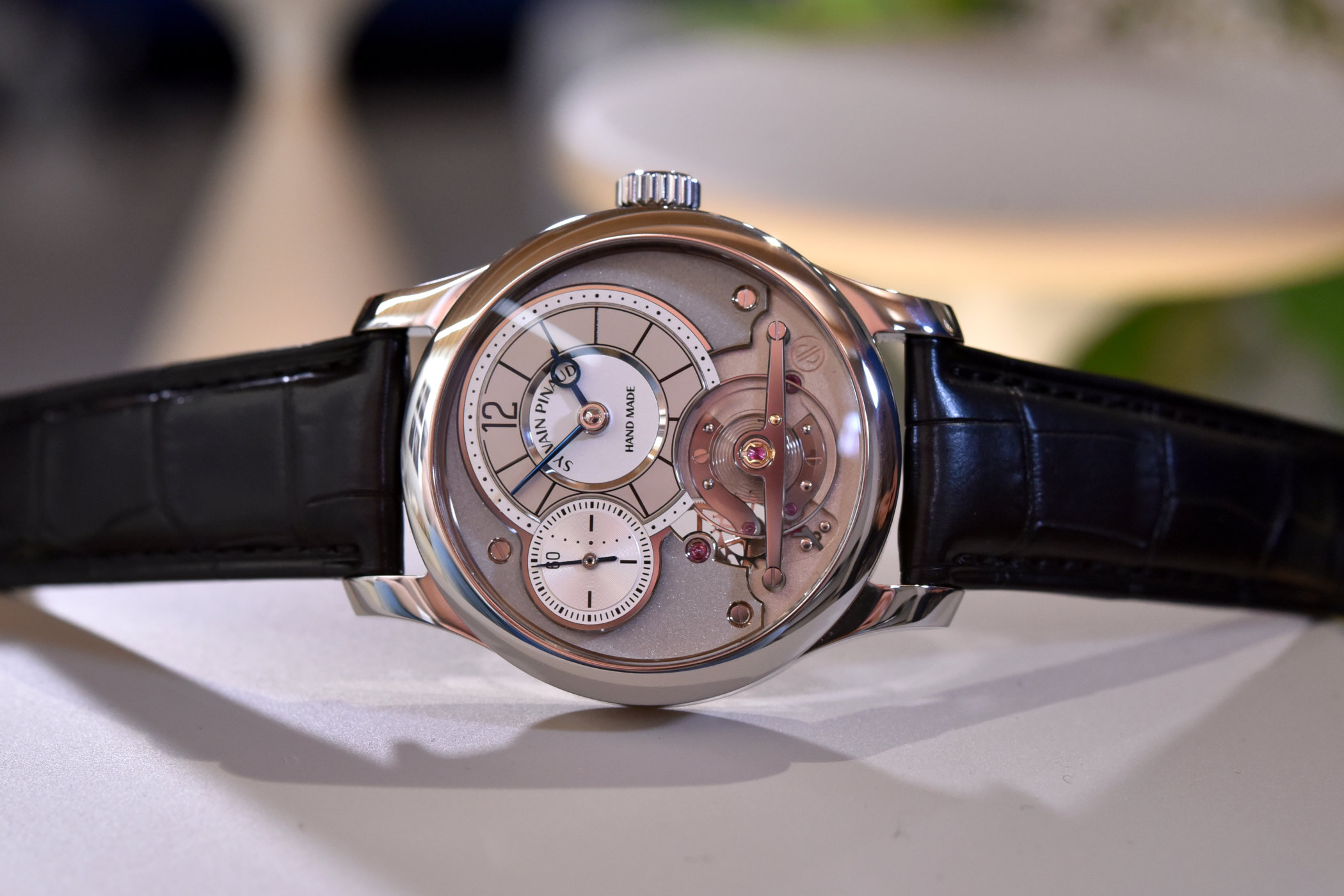
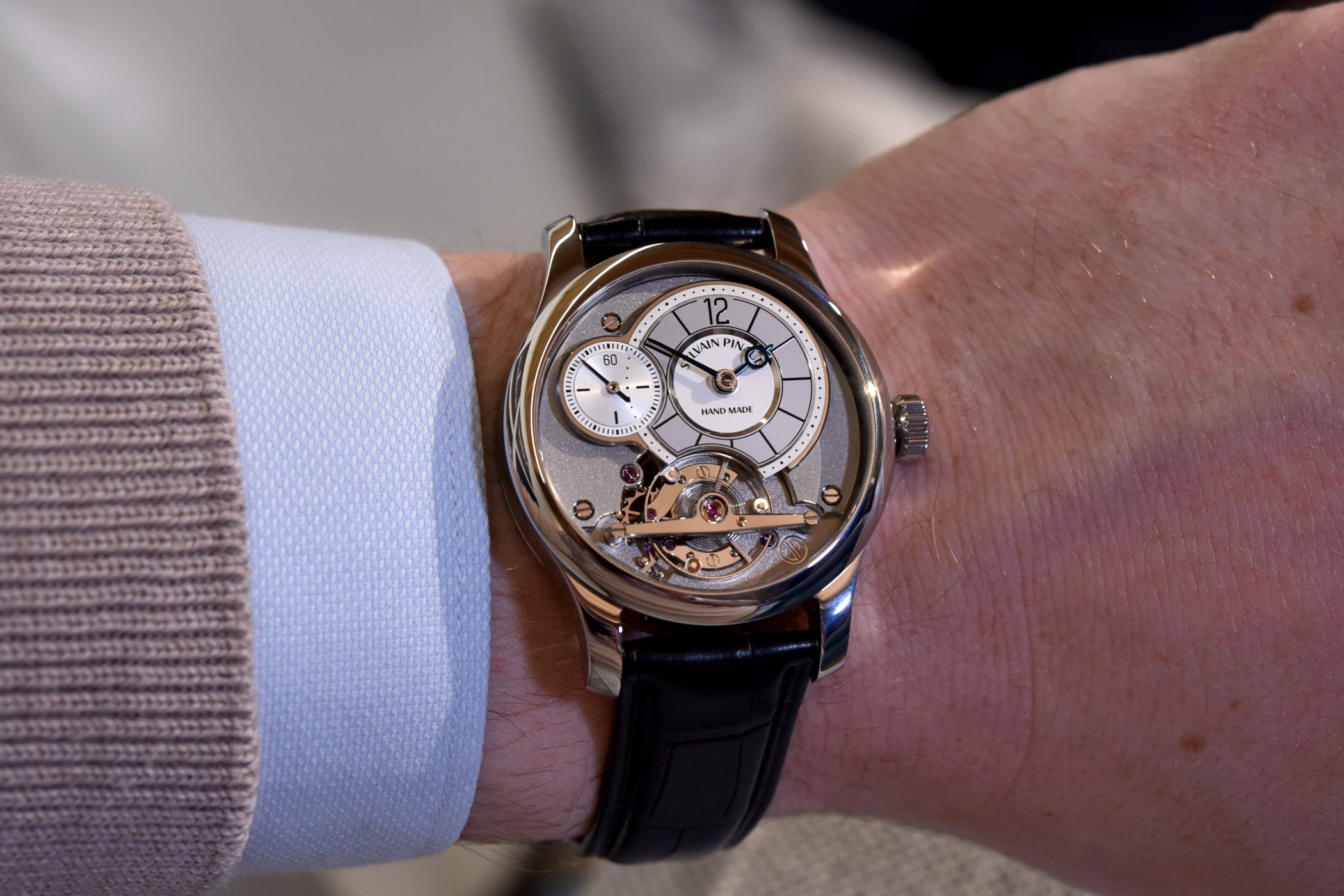
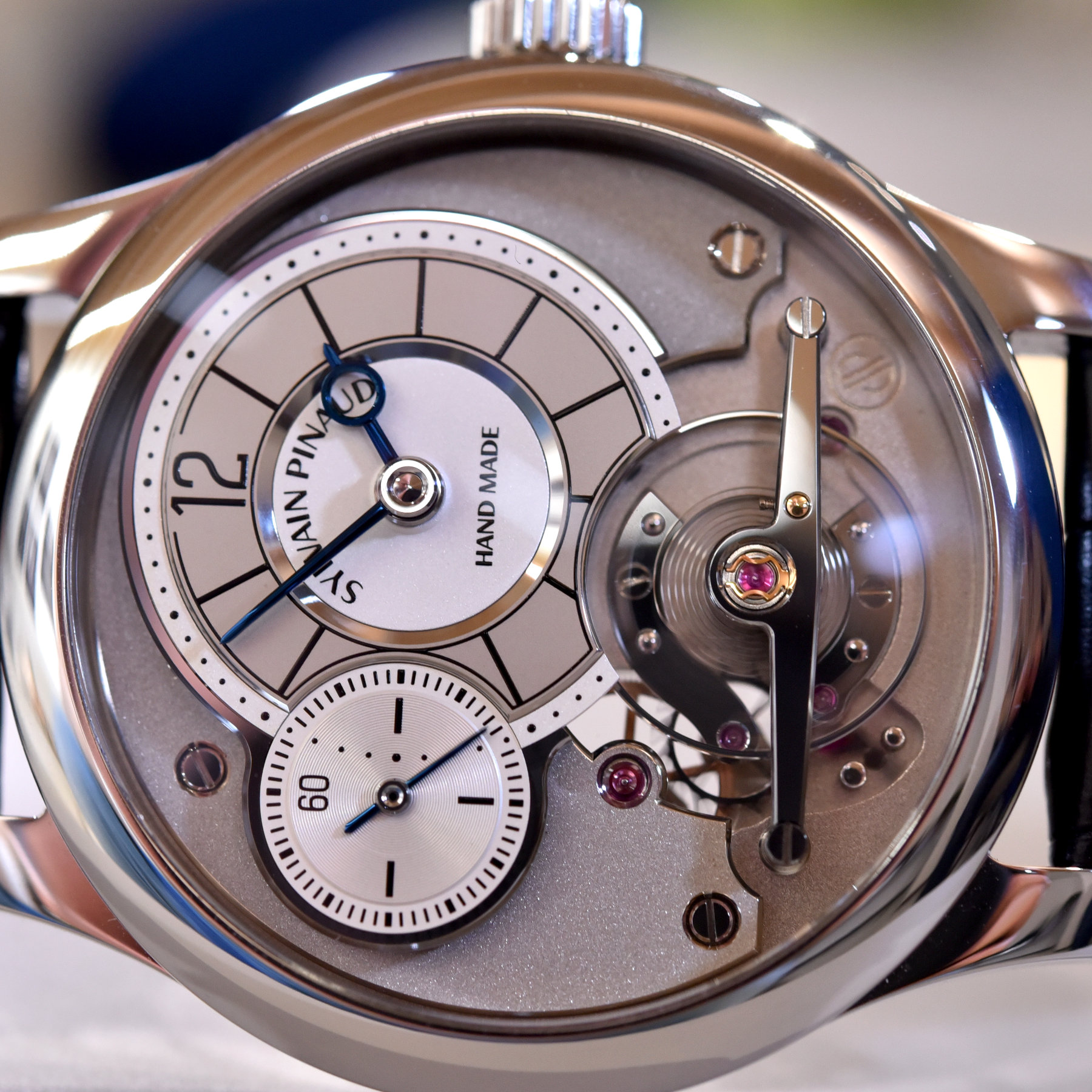
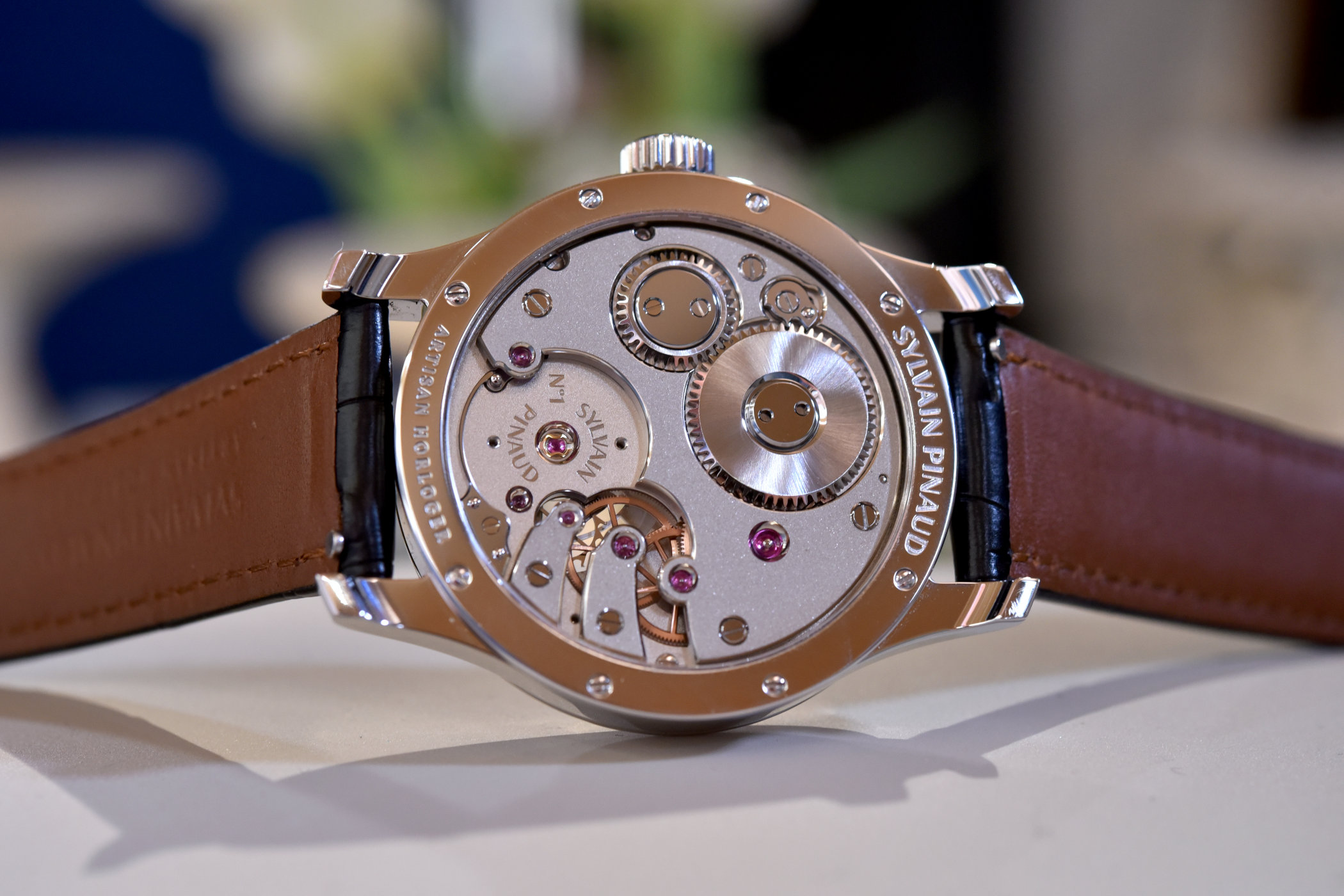
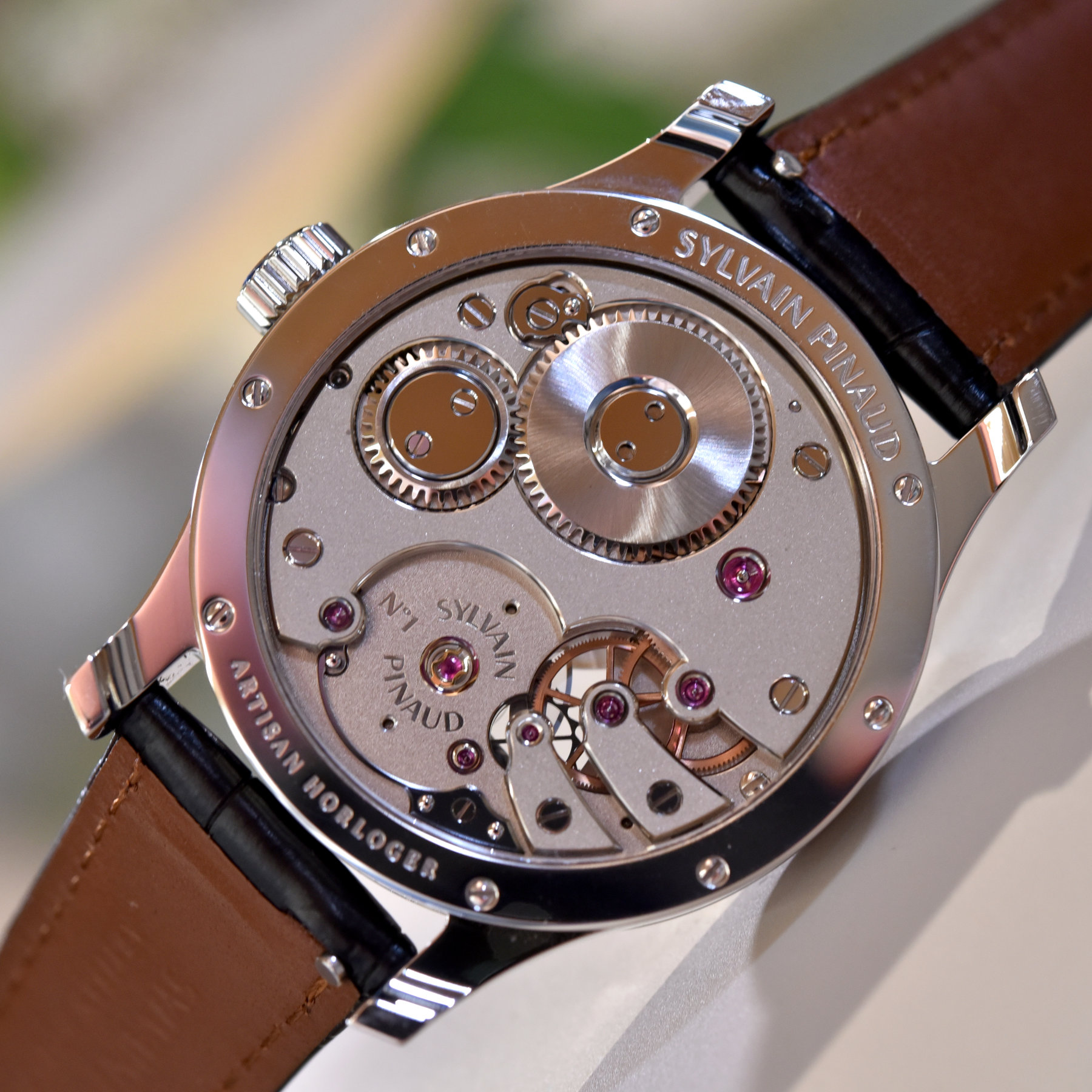




2 responses
This is great to put some light on these discoveries
That’s exactly why we decided to cover them, as each one is an incredible work of art.